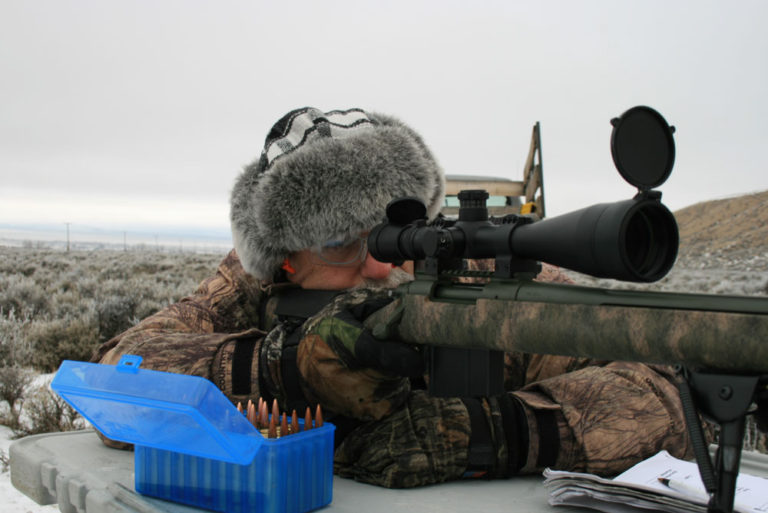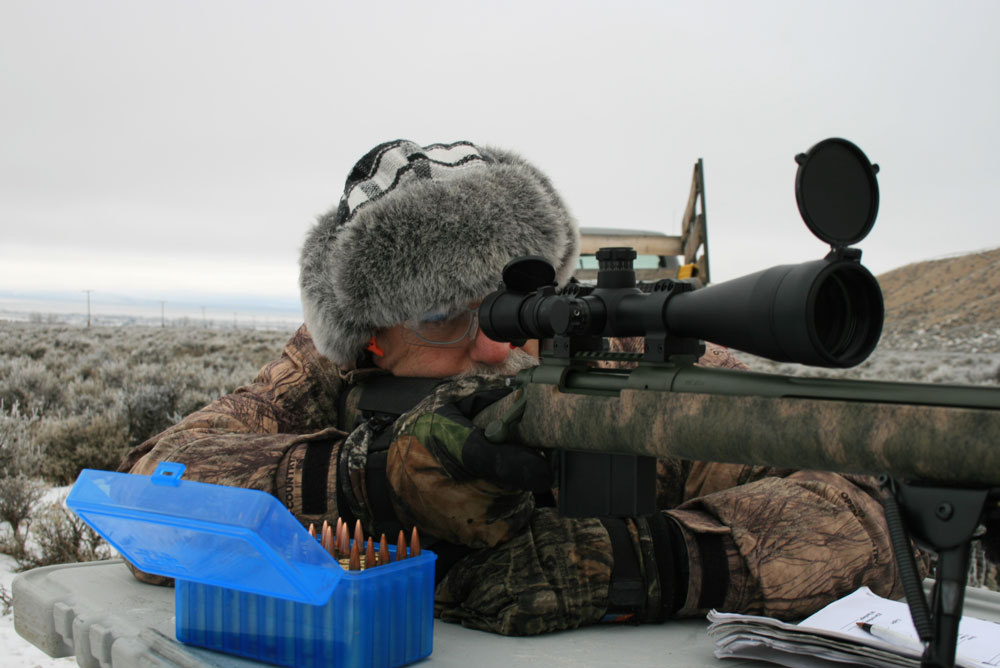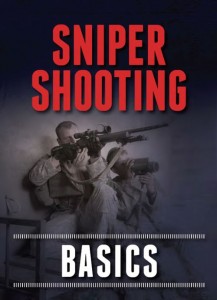

It’s too windy, or it’s cold or raining too hard to go out and practice. The truth of the matter is, whether hunting or competing, long-distance shooters can’t always depend on blue bird skies. To win in nasty conditions, your gun training can't be called for bad weather.
Practice for Wind
Wind is an easy problem to practice where I live in Idaho. It’s windy most every day.
Sometimes it is so windy it would be a waste of ammo to go out and shoot, but most of the time it is really good for practice. We all know the formulas or put the data in our PDA’s, but how often do we shoot on windy days? Getting everything zeroed must be done in perfect conditions, but after that crummy days are what we are going to have to deal with whether it is hunting, competition or a life saving mission.
Wind not only affects the flight of the bullet but can be a problem beating against the vehicle the rifle is resting on or on the firearm itself. While I’m not sure there is much that can be done to overcome this, shooting in these types of conditions will give the shooter some experience in compensating for it. With a rifle, if the wind is banging against my rest and causing grief, I might go to prone to finish the shot.
Ultimately, the only way to figure out how to shoot in bad weather is to shoot in bad weather.
Beat the Rain, Snow
Rain and snow are other problematic conditions that can cause variances in the flight of your precision bullet. We know that rain and snow are going to make contact with the projectile but will it affect its flight path?
When the rain is blowing sideways with the wind it could cause a change in your usual windage D.O.P.E. (Data on Previous Engagements) a bit at longer ranges. Shooting in rain will fine-tune this adjustment. At the very least, the humidity will be higher.
Rain and snow beating against the shooter is also distracting and a little practice in this environment will help the shooter know what clothing will help minimize this, as well as how to deal with it mentally. Warm clothes, boots and waterproof gear can be tested for utility before the competition during a practice session. Operating a precision rifle with gloves should definitely be done before needed.
Temperature Changes
One of the things that will affect performance immensely is temperature. I’m not talking 20 degrees at ranges less than 400 yards, although they will affect bullet flight a bit. I’m talking about extreme temperature changes that will affect impact greatly and that create performance effects on the shooter.
I was shooting a .300 Win. Mag. that was easily capable of 1/3 MOA at 300 yards. I zeroed the rifle at that range in 70-degree weather and went shooting with it in -2-degree weather one afternoon. The rifle still printed its 1/3 MOA group; only it was about 16 inches low. At 300 yards that could be a definite miss on an elk.

Even with the new temperature-resistant powders being developed, the air density is different when the mercury ranges so far. In fact, the affect on the bullet is immense. When shooting at different temperatures, make sure the ammo is out in the cold—or the heat—like it will be in the competition or other shooting scenario.
Conclusion
Ultimately, practicing in crummy weather comes easy for me because the high valley where I live regularly dishes out some of the worst weather in the country each winter. But Idaho doesn’t own crummy weather and no matter where you live or shoot, foul weather days will find you. Don’t use them as an excuse to sit inside and take it easy. Instead, get outside on a few of those crummy days and when the mission, competition or hunt day comes you will have the right gear and D.O.P.E. to make the shot.
Editor's note, this article originally appeared in the Feb. 11, 2013 edition of Gun Digest the Magazine.
Sniper Shooting Basics
Sniper Shooting Basics is your chance to understand the equipment and techniques used to make the long shot come in. This digital download draws upon the expertise of some of the world’s best hunters and tactical shooters to bring you a practical guide to long-range shooting.
This long-range shooting guide is perfect for you if:
- You want to understand the fundamentals to making long-range shots
- You want to study the specialized rifles used by snipers
- You want to generally improve your overall shooting


![Best Concealed Carry Guns In 2025 [Field Tested] Wilson Combat EDC X9S 1](https://gundigest.com/wp-content/uploads/Wilson-Combat-EDC-X9S-1-324x160.jpg)


![Best 9mm Carbine: Affordable PCCs [Tested] Ruger Carbine Shooting](https://gundigest.com/wp-content/uploads/Ruger-Carbine-Shooting-100x70.jpg)
![Best AR-15: Top Options Available Today [Field Tested] Harrington and Richardson PSA XM177E2 feature](https://gundigest.com/wp-content/uploads/Harrington-and-Richardson-PSA-XM177E2-feature-100x70.jpg)

Yeah you got a very good point in there Toufek. Didn’t realize that. For home defense purposes why not.
very cold weather is good training for hunting.
Shooting a few rounds at night without ear protection each year should be done by anyone wanting to practice home defense. Over 80% of hone defense incidents are at night, and obviously with no ear protection
very cold weather is good training for hunting.
Shooting a few rounds at night without ear protection each year should be done by anyone wanting to practice home defense. Over 80% of hone defense incidents are at night, and obviously with no ear protection